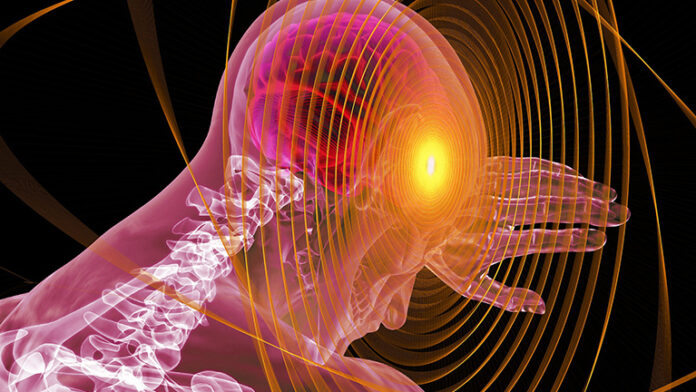Meet the Neurons
Neurons are cells in the brain that help us think, feel and remember. They are the most important cells in our body.
Neurons are found in the brain and spinal cord. They send messages to different parts of the body. Neurons can either be sensory neurons or motor neurons. Sensory neurons carry messages from our eyes, ears, nose, mouth and skin to our brain so we can experience what is happening around us. Motor neurons carry messages from the brain to muscles telling them what to do so we can move around and do things like speak, walk or run.
What is Neuroscience?
Neuroscience is the study of the brain, nervous system and mental processes.
Neuroscience is a broad field that covers many aspects of brain function. It includes studies like neuroanatomy, neurochemistry, neuroendocrinology, neuroimmunology, and cognitive neuroscience.
The goal of neuroscience is to understand how the human brain works and how it affects our behavior and mental processes. Neuroscience is looking at things such as how the brain forms memories, why we fall in love, why we do certain things, or even what happens to people with certain types
How brain works?
The human brain is the most complex organ in the body. It consists of billions of neurons, which are cells that communicate with each other. These neurons are connected to one another via synapses.
The brain is divided into two halves, known as hemispheres. The left hemisphere controls language and logic, while the right controls spatial awareness and intuition.
The human brain is made up of many parts. The brain stem, cerebellum, and cerebral cortex are the three areas most commonly studied in psychology. The brain stem controls our basic bodily functions including breathing, digestion, and heart rate. The cerebellum is located at the base of the skull and helps control muscle movements. Lastly, the cerebral cortex controls higher mental processes such as thought and reasoning.
Neuroscience and Mental Disorders
Neuroscience is the study of the nervous system, which includes the brain, spinal cord, and peripheral nerves. Neuroanatomy is the study of the structure and organization of these parts. Neuroscience is a broad field that encompasses many other disciplines, including cellular biology, anatomy, physiology, chemistry, pharmacology and genetics.
Mental health disorders are mental or emotional conditions such as depression or anxiety disorder. Understanding neurological disorders can help us understand how our brains work and why we experience certain symptoms when we have a disorder.
Neurochemistry And The Brain’s Signalling Chemical Messages
Neurotransmitters are chemical messengers that communicate information from one nerve cell (neuron) to another. They allow for the transmission of impulses between the cells in both directions. Neurotransmitters are released from synaptic vesicles into the synaptic cleft, where they interact with receptors on the post-synaptic membrane.
Have you ever wondered how neurotransmitters affect our mood and thought? The neurochemistry of the brain is the study of how chemicals affect behavior. Neurotransmitter abnormalities are often associated with mental illnesses like depression and schizophrenia. Neurotransmitters are chemicals which help to transmit electrical impulses across the nerve cells. There are two categories: excitatory and inhibitory. Excitatory neurotransmitters increase the probability that neurons will fire. Inhibitory neurotransmitters reduce this probability or stop it.
Neurotransmitters are chemical messages that are used to communicate information from one neuron to another. They can be excitatory or inhibitory, and they can be either fast-acting or slow-acting. The monoamine system is a group of neurotransmitters that includes serotonin, dopamine, epinephrine, and norepinephrine. These chemicals play an important role in mood regulation.
Physiology Of A Neuron: Important Facts to Know
Neurons are cells that process and transmit information throughout the body. They are specialized to receive, propagate, and conduct impulses (nerve signals) from one part of the body to another. Neurons communicate with other neurons through an electrochemical process where electrical impulses are converted into chemical ones in order to cross gaps between cells. The human brain is made up of one hundred billion neurons and an astonishing fifty trillion synapses. The brain begins as a set of cells in the first month of gestation, then grows and divides, forming nine billion neurons by the fourteenth month. It continues to grow until it consists of about 100 billion nerve cells at birth. This number increases throughout life due to large numbers of new neurons being produced from stem cells in both the hippocampus and olfactory bulb
The Brain Wave Patterns We Should All Know
There are three types of brain waves that are most commonly used in psychiatry: alpha, beta and delta. The first is the alpha brain wave, which is the type of brain wave that you experience when you’re awake but not engaged in any mental activity. Beta brain waves are experienced when your mind is active and focused on a task, while delta waves are experienced when you’re asleep or in a deep state of meditation.
Alpha brainwaves have been shown to enhance creativity and relaxation, while beta waves have been shown to increase alertness and mental focus. Delta waves can help with sleep quality by providing deep restorative sleep.

